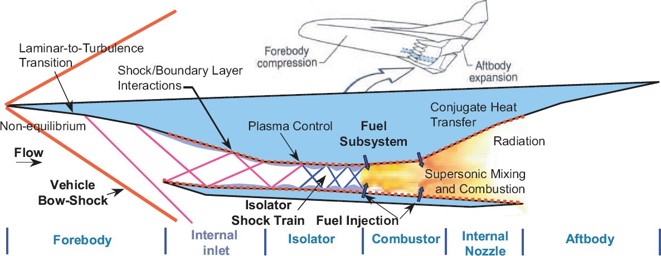
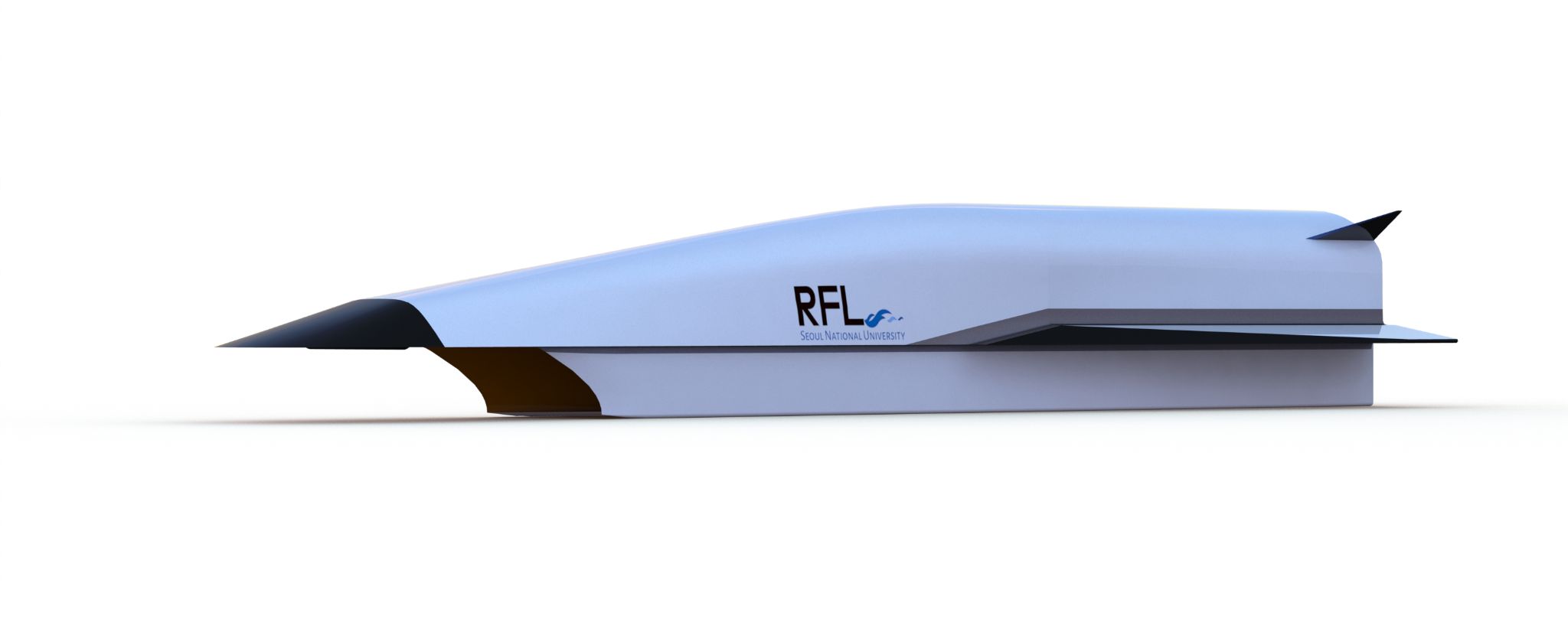
(Top) Schematic of Scramjet Vehicle (Courtesey of NASA.gov)
(Bottom) RFL Hypersonic Vehicle Prototype
Scramjet is a next generation air-breathing propulsion system for high-speed cruise flight. Scramjet utilizes a series of shockwaves, often referred to as Pre-Combustion Shockwave Trains (PCST), to compress and decelerate the incoming air. Since decelerating the captured air stream into subsonic speeds induce significant losses in hypersonic flights, scramjets burns fuel isupersonically to maximize thrust. Therefore, technical challenges arise including designing high-performance hypersonic inlets, fast-mixing fuel injectors and fast-burn supersonic combustor designs.
Inlet Design for Hypersonic Vehicles
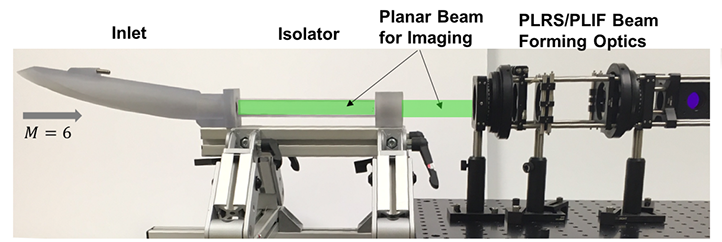

Schematic of SCOOP-type 3D Inlet Test Rig (G. DiCristina et al., 2019)
The shockwave formation at the inlet is sensitive to flight conditions. Therefore, designing inlet that has wide operation range(e.g. Altitude, cruise Mach number, AoA) and high performance is crucial for operating supersonic combustors. To estimate the performance of the inlet, PCST structure inside of the inlet and the isolator is usually visualized.
Inlet Unstart and Control

Supersonic Combustor
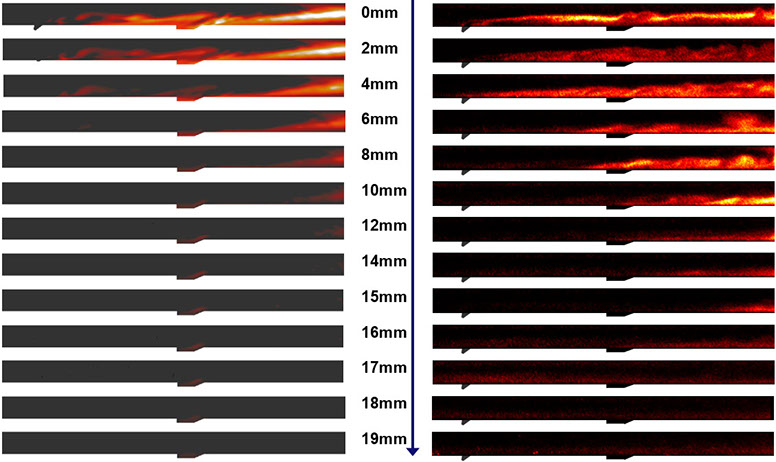
OH molar concentration calculated with CFD(left) and OH-PLIF images(right) at different span-wise direction in a ethylene-fueled supersonic combustor
The flow residence time in a supersonic combustor is much shorter than those in conventional subsonic combustors. Therefore, better strategies to enhance mixing and combustion reaction are needed to burn the fuel and to operate supersonic combustors. Furthermore, the fuel must be carefully selected such that the ignition delay of the air-fuel mixture could be minimized. As any intrusive measurement techniques would induce additional losses, laser diagnostics are preferred to estimate the performance of the supersonic combustor. Specifically, schlieren, shadowgraph or planar laser-induced fluorescence(PLIF) are often used to visualize the internal flow in the combustor and characterize the flame region.
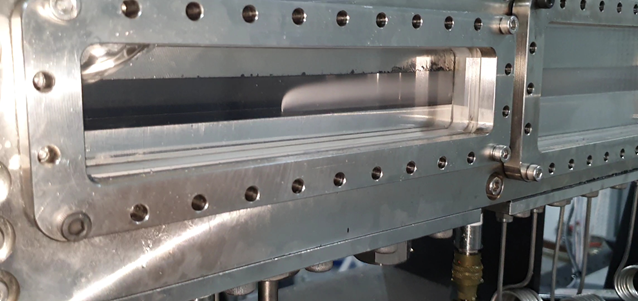
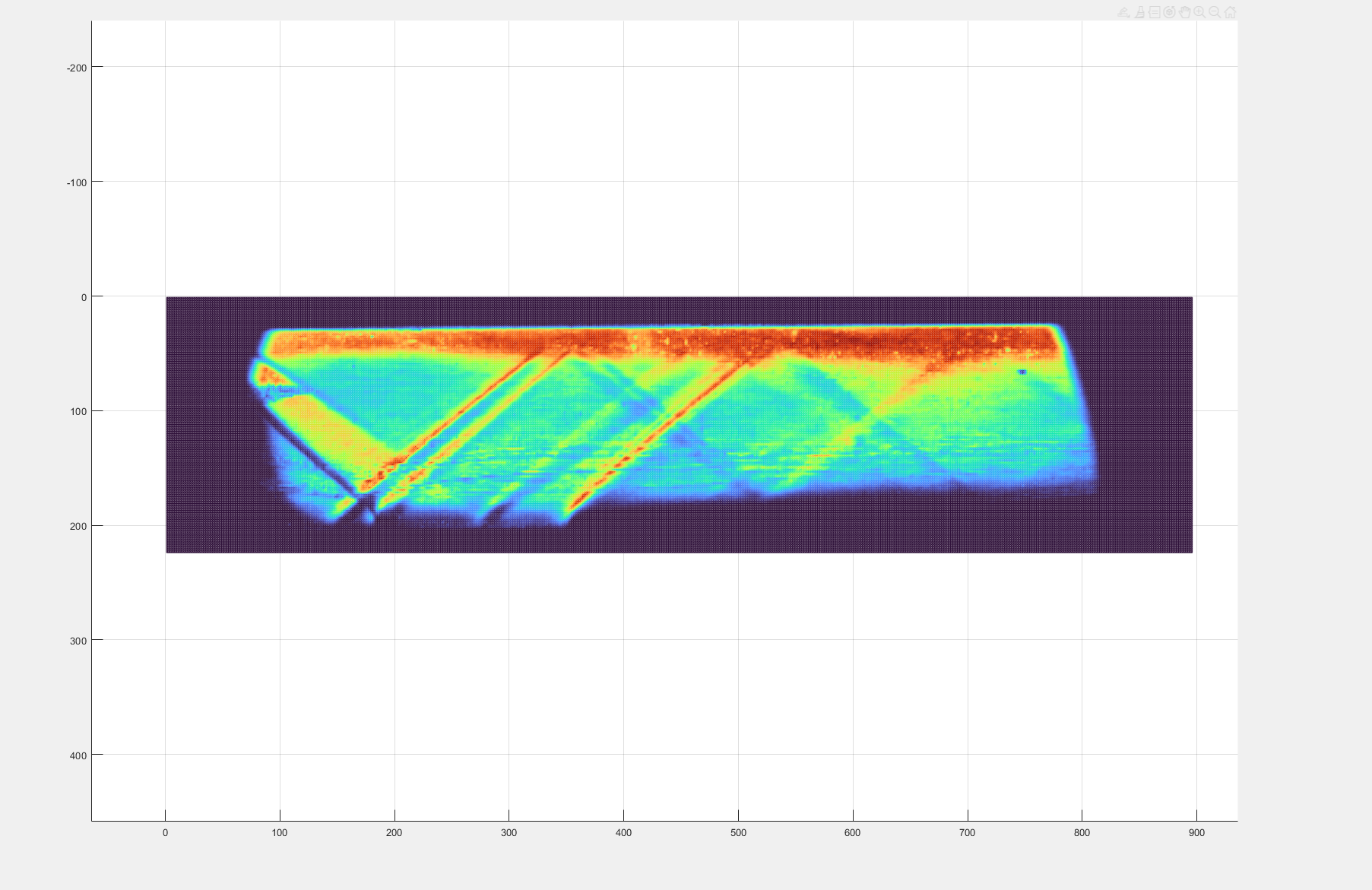

Liquid Fuel Jet Breakup and Atomization in a Supersonic Combustor
For airbreathing hypersonic vehicles, the effort to uphold a permittable degree of total pressure recovery limits the flow within the combustor to remain supersonic. Accordingly, the residence time of the fuel in the combustion chamber is inevitably curtailed, limiting the time available for fuel mixing and combustion. On the other hand, due to the high enthalpy flow associated with the flight envelope, the potential thermal damages can incur limitations to the operability of the vehicle. As per such, provided that fuel break up and atomize resourcefully, liquid fuels prove to be multilaterally promising not only for their lower cost and toxicity, but also for their ability to regeneratively cool the vehicle in hypersonic flights.
In a liquid hydrocarbon fueled supersonic combustion ramjet (Scramjet), the combustor performance is mainly determined by the rate and efficiency of fuel atomization, and mixing. Typically, in scramjet engines, the fuel is transversely injected into the combustion chamber from the wall of the combustor, forming complex physical crossflow interactions. Correspondingly, in an effort to study the physical breakup mechanism of jet in supersonic crossflow, plenty of preceding experimental studies opted for optical imaging and spectrometry for their high temporal and spatial resolution, and nonintrusive quality.
